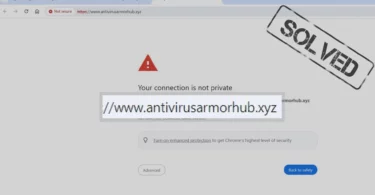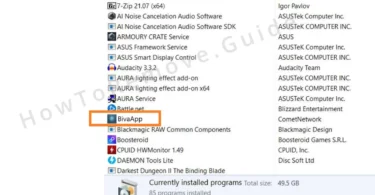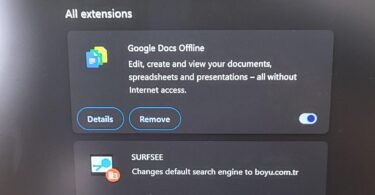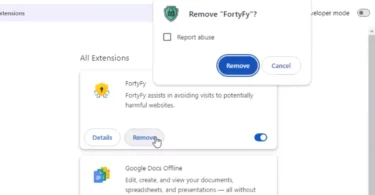We recently came across some user complaints about sudden pop-ups to a site called Antivirus Armor Hub (antivirusarmorhub.xyz) that occur in Google Chrome and other Chromium-based browsers. The users experiencing this report that the site claims to...
Category - Browser Hijacker
What is a browser hijacker?
A browser hijacker is a software initiating browser redirects to select websites and landing pages without the user’s consent. Browser redirects are called as such because of the effect they have on the browsers they embeds themselves in. Namely, software applications that belong to this particular category have the capacity to take over the browser by overriding the user’s configurations of it and installing their own. Ecamples of this include setting a new homepage, changing the default search engine, and at times even introducing a new toolbar to the browser’s interface.

In addition to the above, these programs trigger something we call page redirects, which is where the term ‘browser redirect’ originates from. Page redirects, in turn, are the instance in which your browsing program automatically loads a new URL in your current tab or just spontaneously opens a new one to load said URL.
Browser hijackers are very often associated with computer viruses, although it is factually incorrect to use these terms interchangeably. Browser redirects or hijackers are actually not malicious and they don’t have the qualities necessary to inflict any real harm on the infected computer – much unlike viruses.
Instead, it would be more accurate to refer to these programs as potentially unwanted or PUP’s. This is because despite their relative harmlessness, there are a number of issues related to them that make them an undesirable presence in one’s OS. And we would like to elaborate on those issues further down in this article.
How does a browser hijacker infect you?
In most instances of first seeing such an application on their machine, infected users will have no idea where it came from. And that is because the developers of this type of software rely on stealth tactics in order to have it successfully distributed, most commonly software bundling. As part of it, the developer will usually include the browser hijacker in the setup of another program (typically some free system optimization tool or similar piece of programming). The hijacker will be included as an optional install, meaning that users would normally have the opportunity to leave the hijacker out of the installation process.
However, if the user were to select the default installation settings of said optimization tool, which tends to most often be the case, then the added component (in this scenario, the browser hijacker) will automatically be installed as well. The only catch is that this information is generally withheld from the end user and they come to find out about it already post factum.
What can a browser hijacker do?
Browser hijackers generally serve one purpose: generating paid ads. These are advertising tools in a sense and their creators earn money from clicks on the advertisements that they showcase on users’ screens during their browsing sessions.
With that in mind, again you can see that they don’t have any malicious intentions. The problems arise in the practices that these software products are often involved in, in order to maximize their profits from said clicks.
Namely, hijackers will very often be engaged in collecting data from your web browser so as to optimize their online ads and tailor them to each individual user. This is rarely made known to the user in question (just like the installation process itself), and there are also a lot of questions that arise as to how the gathered information can be utilized aside from just the target ads.
In addition, as you might have guessed it already, browser hijackers expose users to vast quantities of unwanted web locations. Either way, among the numerous sites and pages that browser redirects can link to, there can be those that are unsafe and may potentially lead to malware infections, including higher-class malware like Trojans or ransomware.
How do you remove a browser hijacker?
Anyone who has ever had a browser hijacker on their computer knows that removing them is trickier than uninstalling regular programs, because the developers deliberately avoid including an obvious uninstallation option. So as a result, users are forced to figure out how and where to locate all the components of the hijacker that has ended up nestled in their system. And if you happen to miss one – that residual part of the software can oftentimes be enough for it to end up reinstalling itself in the computer, which can be highly frustrating, not to mention suspicious.
Thus, in order to effectively get rid of hijackers, it’s a good idea to have some professional malware removal tool scan your computer. Alternatively, there are special removal guides available for specific browser hijackers. In fact, if you can pinpoint the exact variant that has infected your system, then chances are we might have a guide created for it already, which is what this category is dedicated to.
How to Remove the Imgcreator Virus
Imgcreator.zmo.ai is a website for generating AI images that seems perfectly legitimate at first sight, but many users have recently been getting automatic redirects to it for no apparent reason. This has led to a lot of confusion surrounding the...
How to remove TroxApp from your computer
TroxApp is one of many iterations of a particularly stubborn browser hijacker app that gets in the system and takes over the browser after being installed through a file bundle or a dedicated setup.msi installer. We encountered many reports from...
How to Remove Skyjem
Skyjem is one of the most commonly encountered browser hijackers for Windows PCs in recent weeks, so we are actively monitoring it to provide you with the most relevant, up-to-date, and helpful information and removal instructions. Like most other...
How to Remove the Ksearchy Extension From Chrome
Ksearchy is a rogue Chrome extension by findflarex.com that functions as a browser hijacker that takes over the browser and introduces unwanted changes to its settings without asking for your permission. It replaces the default search engine with...
How to Remove NebulaFractica From Chrome
NebulaFractica is a typical example of a browser hijacker extension, similar to NebulaNanoel and FortyFy, that targets Chrome and other Chromium browsers (Edge, Opera GX, Brave, etc.) and leverages their “Managed by your organization”...
How to Remove BivaApp From Your PC
BivaApp is a rogue software that hijacks Chrome, Edge, and other Chromium-based browsers. The rogue app is the latest in a long line of highly persistent and invasive hijackers, with some of the previous iterations being TruoApp, TroxApp, and...
How to remove the SurfSee Extension from Chrome
The SurfSee Chrome extension is a browser-hijacker class malware we recently researched after being informed by reader comments. Like other recent offenders that redirect to Boyu.com.tr (like FortyFy and Searchisty) it uses Windows’ built-in...
How to remove the Fortify extension from Chrome
Well, this is a bit of a weird situation. We are writing about a misspell of the Fortyfy extension which is a Chrome browser malware, but since Google decides writing “Fortyfy” is plain wrong, it shows only results for a completely different...
How to delete Searchisty Extension from Chrome
The Searchisty extension is yet another rogue extension we detected recently, together with FortyFy and NebulaNanoel. All of the mentioned extensions are created by malware actors to enforce an active managed by organization state on the browser, to...










